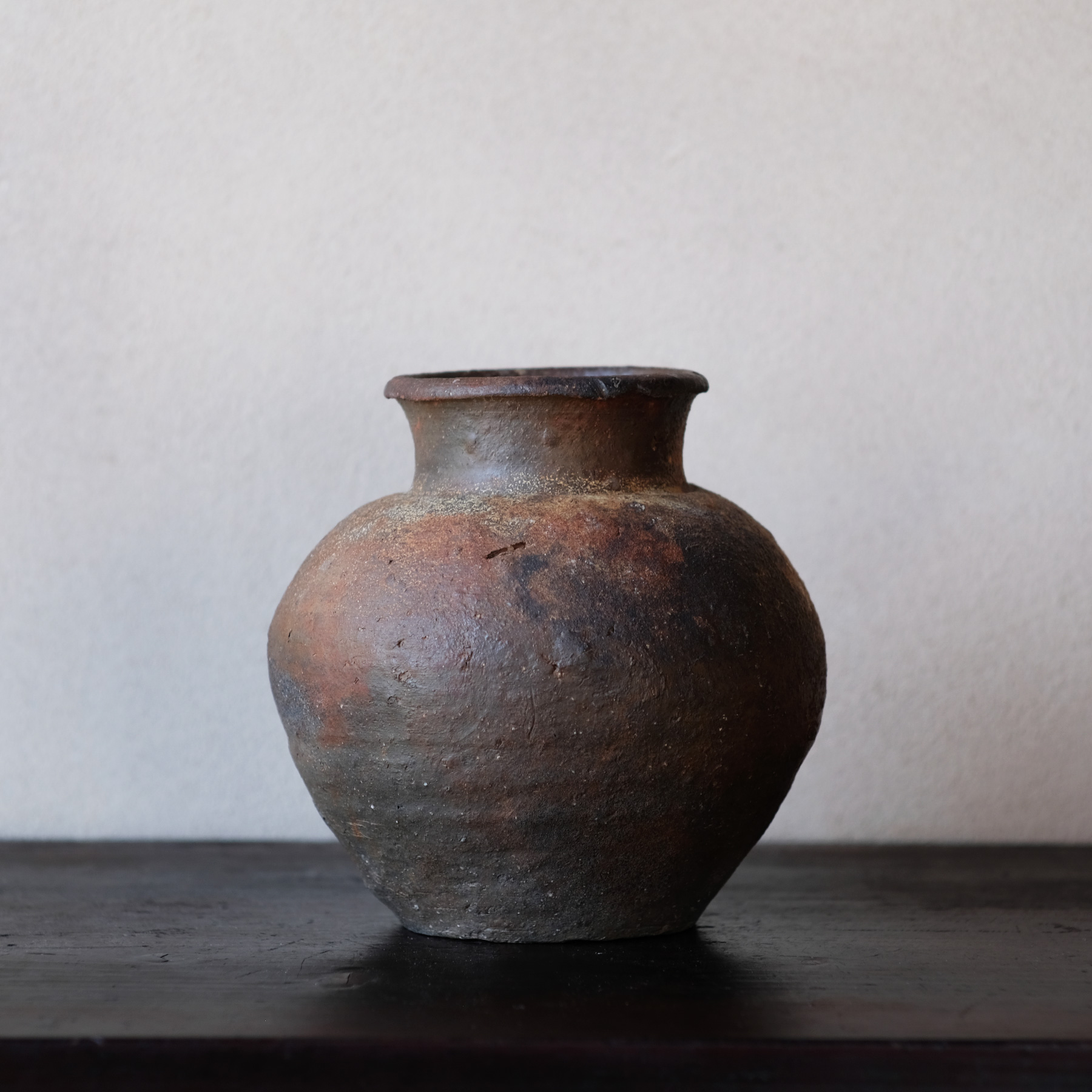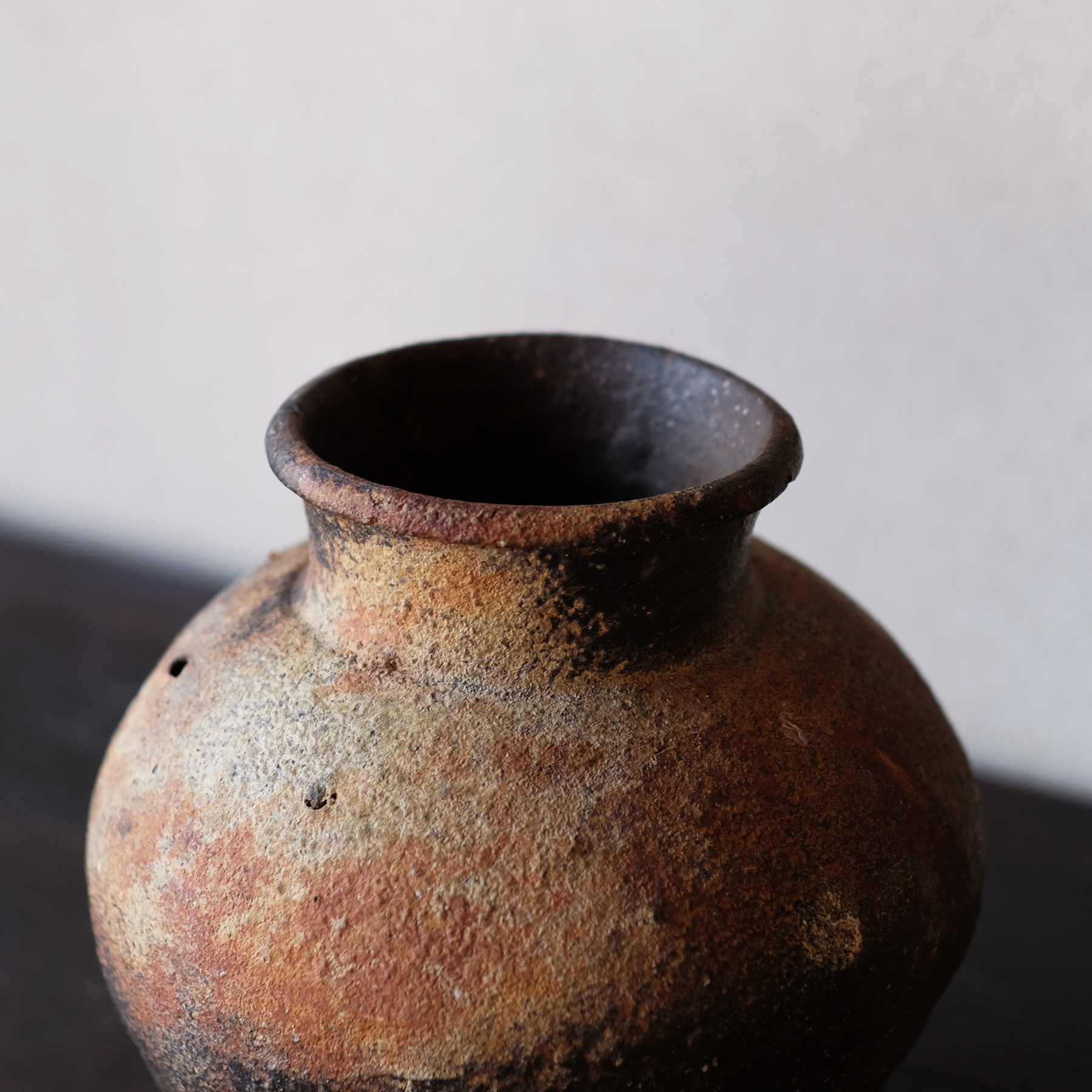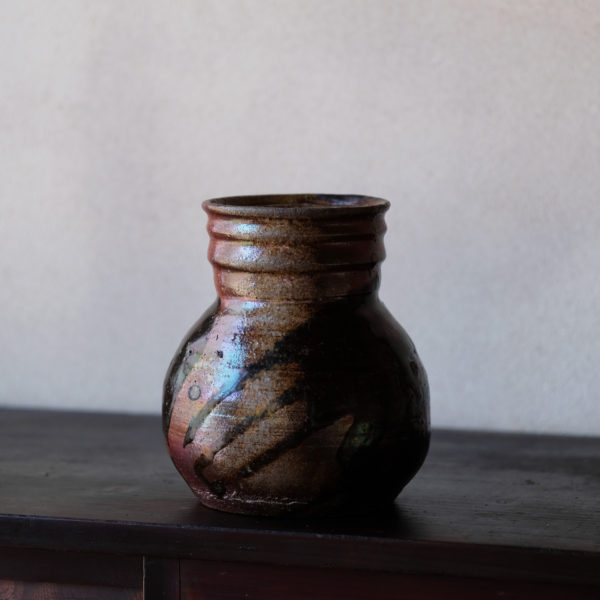Cham Ware Unglazed Jar
ARCHIVEDA jar excavated in the current central south part of Vietnam. The base is a string cut, the body with overhanging shoulders has a slightly open mouth and neck, and the beaded rim. Its appearance, which is covered with ash on an unglazed body, is reminiscent of the work of the Six Ancient Kilns in Japan, such as Tokoname and Shigaraki.
The Champa Kingdom (192–1832) exported glazed pottery in the 15th century. It is presumed that this type of pottery was fired by the Cham people under Nguyễn lords (1558–1802) in the 16th century, which allowed Red Seal Ship from Japan after the power of Champa weakened and moved further down south. In Japan, it was called Nanban-yakishime and was categorized with other unglazed wares from Southeast Asia and South China wares and was prized for its tea ceremony.
It is ideal for flower arrangements without water leakage, but it is recommended to use an inner cup because it is non-glaze. Except for natural alteration that occurred during the kiln process, there are no noticeable defects, and the condition is good.
- The description will be updated as our research progresses.
- Images may differ in color from the actual products.
- Please read "Terms" when purchasing.
















